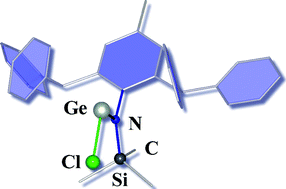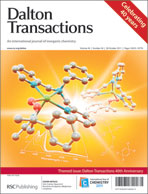The preparation of a series of extremely bulky secondary amines, Ar*N(H)SiR3 (Ar* = C6H2{C(H)Ph2}2Me-2,6,4; R3 = Me3, MePh2 or Ph3) is described. Their deprotonation with either LiBun, NaH or KH yields alkali metal amide complexes, several monomeric examples of which, [Li(L){N(SiMe3)(Ar*)}] (L = OEt2 or THF), [Na(THF)3{N(SiMe3)(Ar*)}] and [K(OEt2){N(SiPh3)(Ar*)], have been crystallographically characterised. Reactions of the lithium amides with germanium, tin or lead dichloride have yielded the first structurally characterised two-coordinate, monomeric amido germanium(II) and tin(II) chloride complexes, [{(SiR3)(Ar*)N}ECl] (E = Ge or Sn; R = Me or Ph), and a chloride bridged amido-lead(II) dimer, [{[(SiMe3)(Ar*)N]Pb(μ-Cl)}2]. DFT calculations on [{(SiMe3)(Ar*)N}GeCl] show its HOMO to exhibit Ge lone pair character and its LUMO to encompass its Ge based p-orbital. A series of bulky amido silicon(IV) chloride complexes have also been prepared and several examples, [{(SiR3)(Ar*)N}SiCl3] (R3 = Me3, MePh2) and [{(SiMe3)(Ar*)N}SiHCl2], were crystallographically characterised. The sterically hindered group 14 complexes reported in this study hold significant potential as precursors for kinetically stabilised low oxidation state and/or low coordination number group 14 complexes.


 Please wait while we load your content...
Please wait while we load your content...